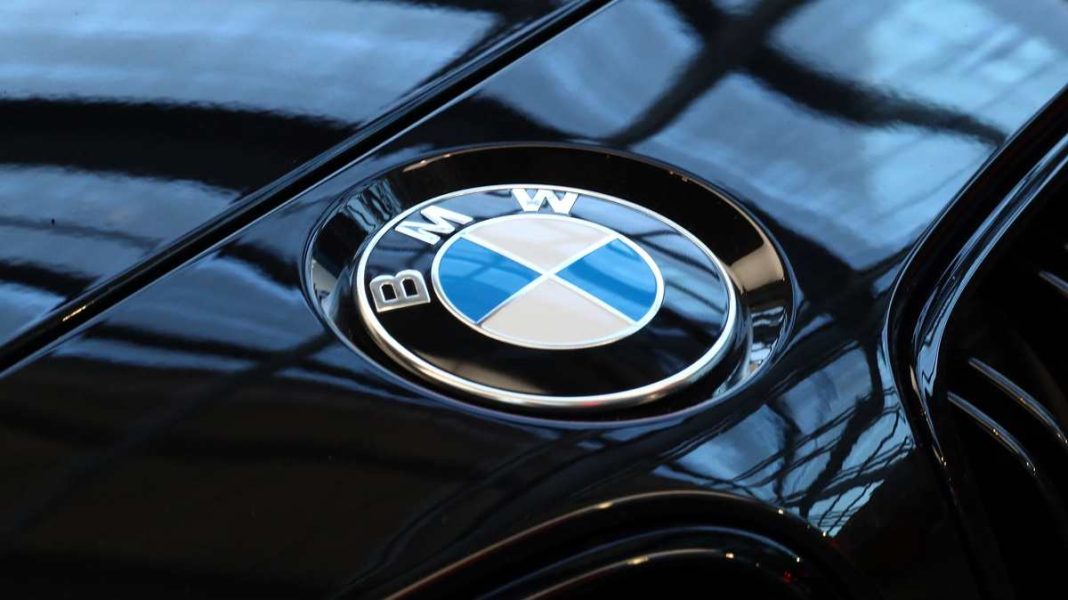The type of technological innovations the automobile industry presented at CES 2023 would put dedicated auto shows to shame. It is understandable for the automakers to cater to the audience with such variety as the event occurred against a challenging economic backdrop for the auto industry. From cars following their owners to color-changing vehicles, all were present at the event and provided a glimpse of what we can expect from the car industry in the future.
BMW
The luxurious car company introduced a prototype car with their new technology, i Vision Dee, which is not a built-in AI but rather a smart companion. The “Dee” in this case stands for Digital Emotional Experience, which will be used in the company’s new line of EVs, which will begin production in 2025. A glimpse of the features was shown through the prototype car, where the windshield consisted of AR technology, and the tail, side window, and nose had panels for exterior communication. There is no screen on the dashboard but rather a digital slider that shows the augmented projections, navigation and driving information, and calls and texting options, among many others. BMW has also used E-ink technology on this model, and with the presence of 240 separate color cells, the car can even change color like a chameleon according to the mood of the driver.
Volkswagen
Volkswagen has already stated that the ID.Buzz and Sedan ID.4 will be released in 2023, while it also unveiled its electric Sedan ID.7 at CES 2023. The ID.7 comes with a staggering camouflage design and is expected to provide 700 km on the road. The car is built on the modular electric drive matrix (MEB), with a 400-volt architecture and the ability to recharge its battery with 170 kW power. The camouflage scheme, which is better known as electroluminescent, is just not for show but will light up when the sound system plays or on the driver’s command and is done using 40 layers of paint. Though much is not known about the features of the car, some things have come to light that the company desires to provide, including digitally controlled air vents, an AR head-up display, and a 15-inch central infotainment screen, among many others.
Sony-Honda
Sony and Honda surprised the world with the news that they would be combining to build an EV in 2020. At CES 2023, the prototype of “Afeela” was unveiled, and it immediately captured the attention of the world. To begin with, the car comes with 45 sensors and has a digital display on the front bumper that shows the battery level and weather, which is extremely practical and innovative. Neither does the car come with a handle nor a lock and key; it opens with a dedicated app on the smartphone. It feels like most EVs will be equipped with the Snapdragon Digital Chassis platform, which tactfully integrates driver assistance, telematics, autonomy, and connectivity. The inside of the car consists of half-wheel steering, and on the driver’s side, it displays battery life, speed, and other necessary driving information, while on the passenger’s side, a separate display shows weather, gaming options, maps, and photo albums, among many others. Sony and Honda have confirmed that the car will have Level 3 autonomous driving, which means that the driver will not be required to control the vehicle in certain circumstances.
Stellantis
At CES 2023, Stellantis unveiled a handful of concepts for EVs that are surely interesting. The RAM 1500 Revolution will set a high standard for EV truck and van manufacturers in their nascent stages. Within 10 minutes, the vehicle can add up to around 160 km and will support an architecture of 800 volts that supports fast charging. With its salon-style door and absence of a B-pillar, the interior of the truck looks extremely spacious. The truck has small side-view mirrors that use 3D auto parts, and the roof is made up of glass with electro-chromatic panels. The shadow mode integrated into the truck allows it to follow the person walking ahead and also has jump space available. Stellantis-owned Peugeot has further refined its model with the introduction of the “Inception” concept. The refined design comes with razor-sharp edges and an athletic curve and can provide 800 km of driving per charge. Peugeot’s i-Cockpit provides some next-generation features like the Hypersquare steering wheel control system and boasts Level 4 autonomous mode. The Halo Cluster, which is present behind the Hypersquare, is a 3D instrument that provides information to the driver as well as the person approaching the car outside. Chrysler, a sub-brand of Stellantis, also showed a glimpse of the cockpit design of their new two-wheeled electric vehicle, which they desire to launch by 2025 and make fully electrified by 2028.
Mercedes Benz
The German company is going to challenge Elon Musk’s Tesla by creating its own brand of electric car charging stations across the USA, Europe, and China. By 2027, Benz hopes to have 10,000 charging stations with a reservation booking system. The charging stations will have the option to buy food and get shelter and will also be equipped with 350 kW chargers. In North America alone, the company promises to install more than 2,500 chargers across 400 stations. Mercedes also got approval for their level 3 driver assistance, which can be used in dense traffic and will allow a speed of up to 64.3 km/h.
Verge Motorcycles
A hubless electric motorcycle with a similar appearance to Tron bikes was a myth until the 2018 Verge TS prototype was shown. But the Verge TS Ultra e-motorcycle is a different beast that was unveiled at CES 2023. The unique design of the bike puts the magnet ring and the copper core of the motor in the rear wheel’s rim and successfully transfers the torque and power to the road. The bike comes with 201 horsepower and 1,200 Nm of torque, which helps the bike accelerate from 0 to 96.5 km/h within 2.5 seconds. Available in black, lime green, white, and red, the Verge TS Ultra can be fully charged within 25 minutes. To buy this model, users have to shell out $44,900 and can expect delivery later in 2023.
Good Year Tire And Rubber Company
It is really great to see big automobile corporations shifting to EVs, which will not only cut down fossil fuel consumption but also reduce pollution by a huge margin. However, other automobile components, such as tire dust, contribute to pollution by ending up in water bodies and increasing the microplastic level in them. Goodyear has taken it upon itself to change this by bringing in a tire that is composed of 90% sustainable materials. Rice husk waste is used to develop silica for a better grip, the bio-circular feedstock is used for making mass-balance polymers, and the electric arc furnace process is used for creating the cords inside the tire. By the end of 2023, the company desires to start production, while in the far future, it aims to create tires with 100% sustainable materials.
ZF Group
The ZF group has brought this year one of the most practical and innovative technologies one can ask for in cars, the “Heat Belt.” It is really arguable why this simple yet innovative thing was not thought of for so long by automakers. The heat belt has a similar function to a normal automotive seat belt, with just a twist of heating conductors knitted inside the fabric of the belt. Now users can easily take off their coats or sweaters inside their cars and sit comfortably. The automotive part is perfect for EVs and can provide a heat range between 96.8 and 104 degrees Fahrenheit. The seatbelt will also lessen the use of the HVAC system in the EVs, which in turn will increase their range on the road.
HARMAN International
The subsidiary brand of Samsung has impressed a lot of attendees with its implementation of AR in navigation. Ready Vision technology helps a driver to have a safe journey with lots of information using its AR software and AR head-up display hardware. The technology uses machine learning and computer vision to warn the driver of the presence of 3D objects and avoid collisions. The company also desires to launch an external microphone and sound and vibration sensor for the cars, which would help in detecting a range of sounds, from voice commands to emergency vehicle sirens. The Ready Display by HARMAN introduced this year provides an advanced and engaging visual experience and was launched with Neo QLED Auto. Lastly, the Ready Care technology developed by the company has closed-loop interior sensing that determines the cognitive load, level of attention, and focus, and estimates the diver’s eye activity on the road. The technology combines machine learning, neuroscience, and artificial intelligence to determine the behavior of the driver and provide responses accordingly to lessen distraction, stress, drowsiness, and anxiety.
Icoma
The Icoma Tatamel Bike was introduced as a concept in 2021, and it promised at this year’s CES that it would be available in the US market by April 2023 if everything goes as planned. The Icoma Tatamel Bike is a foldable electric vehicle that folds into a suitcase format and is extremely portable. The e-bike will weigh 50 kg and can carry a weight of up to 100 kg. It has a top speed of around 40 km per hour and a range of up to 30 kilometers. The company has set a starting price tag of $3,999, and the e-bike can be fully charged within 3 hours. The bike can even act as a 100-volt AC power source for emergencies and outdoor activities.
Wrapping Up
Other than the companies mentioned in the list, the event also saw many other innovations and collaborations from tech giants like Google, Qualcomm, and Blackberry with automobile companies. Two things became clear from the event: firstly, the importance of software integration into vehicles to enhance customer experience and safety, and secondly, the sustainable approach of the automotive industry with a knack for developing electronic vehicles. It goes without saying that autonomous driving, along with these two points, will surely change the automobile industry for the greater good.
See more: Innovations From Tech Giants At CES 2023

